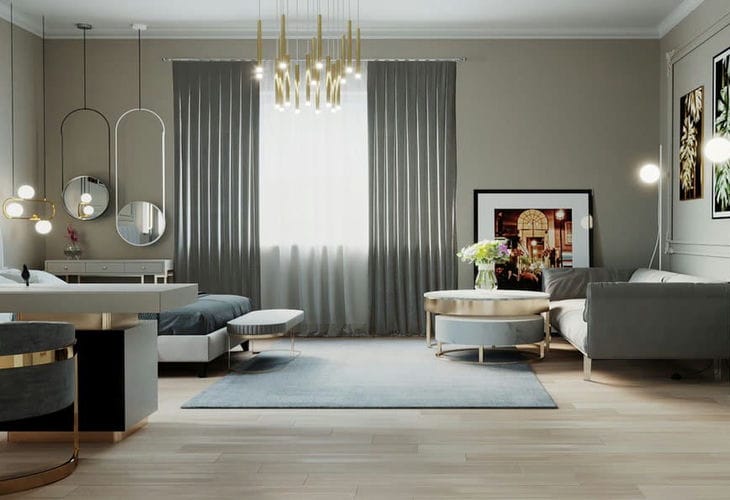Do you hate your apartment because it resembles a hamster cage?
For decades, designers have been using tricks that turn even the tiniest closet into an Instagram-worthy apartment.
Your brain can be tricked in five minutes if you know where to look.

Start with mirrors, but not the ones hanging above the stool in the hallway. It's all about strategic placement. A large mirror opposite a window will double the amount of light and "push" the walls apart.
But be careful: if it only reflects the corner with the mop rack, the effect will be like a fun house. Place the mirror so that it “reads” the most advantageous part of the room — a sofa with textiles, a bookcase with books, or even a view from the window.
Experiments show that vertically oriented mirrors visually raise ceilings, while horizontal ones expand the space. But don't overdo it: three mirrors in one room will turn it into a labyrinth, not a loft.
Now about stripes. Curtains with vertical stripes from ceiling to floor will "stretch" the wall, even if the window is the size of a transom. The main thing is to avoid contrasting black and white lines. They are suitable only for an Art Deco bathroom, but not for a bedroom where you dream of peace.
Furniture on legs is your secret ally. A sofa without a massive base, a bed with high supports, a table with thin metal legs - all this creates "air". When the floor is visible under the furniture, the room seems larger.
Monochrome is not boring, but a weapon. Scandinavians understood this long ago: the fewer colors, the easier it is for the brain to perceive the space as a whole. Choose a basic shade (beige, gray, light blue) and use it in 80% of the interior. The remaining 20% are accents, but in the same range.
For example, if the walls are gray, add graphite pillows, silver photo frames, and a rug with a subtle steel pattern. Contrasting black window frames? Yes, but only if they are thin and do not overwhelm the horizon line.
Lighting is not a chandelier in the middle of the ceiling. It is three layers that work wonders. The first is general light (warm ceiling spotlights), the second is zonal (table lamps, sconces), the third is decorative (candles, garlands). When all three levels work together, the room gains depth.
Corners that used to "fall" into the darkness are now visible, and the boundaries of the walls are blurred. For example, a floor lamp near the sofa will "push back" the wall behind it, and the backlighting of the shelves will make them part of the interior, not a clutter.
And never use cold white light – it will turn the apartment into an operating room. Only 2700–3000 Kelvin: this is the warmth that “embraces” the space.
And now – a forbidden technique that designers keep quiet about. Transparent furniture. A glass table, acrylic chair or Lucite shelves are almost invisible to the eye, but functional. They take up space, but do not “steal” it visually. Place a glass coffee table in the center of the living room – and you will get the effect of “floating” furniture.
Just don’t get carried away: three transparent objects in one area are already tasteless.
What to do if there are no windows in the room? Steal light from your neighbors. Use LED panels with a "window" effect - they imitate daylight and even the movement of clouds.
The easiest trick is to remove all unnecessary things. Every object on the floor or wall "eats" centimeters. Check: maybe your carpet is long overdue for the cat, and the collection of magnets on the refrigerator makes you sick?
Clear the windowsill of cacti that you always forget to water. Give your neighbors the shelf you bought "just in case." The more empty space there is, the more spacious the room seems.
And the last thing. The color of the doors should match the color of the walls. A white door on a white wall "dissolves", creating the illusion of an arch. And a contrasting door is a border that "cuts" the space. If you feel sorry to paint expensive wood, at least choose handles in the same color as the wall.








